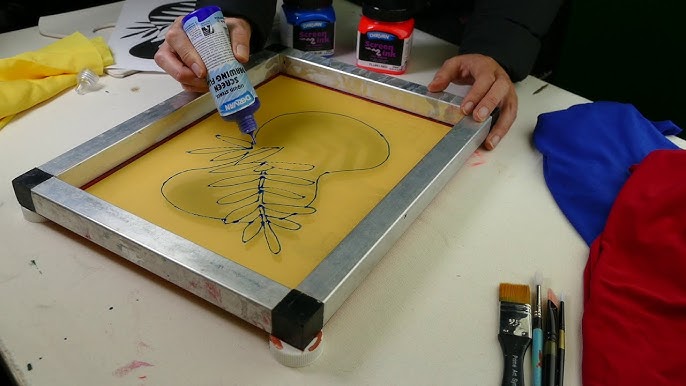ChatGPT said: The perks of working with 10:9 Design Embroidery for branding
The Necessary Overview to Understanding Screen Printing and Its Versatile Uses
Screen printing has an abundant history that dates back to ancient times, evolving into an advanced method utilized across various industries today. This guide explores the complexities of the screen printing process, detailing its applications in home, style, and marketing décor - 10:9 Design Company. Recognizing these basics can open up creative potential for both creative and industrial tasks. The complying with sections will certainly disclose important ideas and methods to enhance one's screen printing endeavors
The Background of Screen Printing
Although screen printing has roots that trace back centuries, its development reflects the imaginative and technical innovations of numerous societies. Coming from old China, the technique was at first used for enhancing textiles and later spread to Japan, where it became indispensable to Ukiyo-e woodblock printing. The method shifted to Europe in the 18th century, where it got appeal amongst craftsmens and industrial printers. The innovation of picture emulsion in the 20th century reinvented screen printing, allowing for more intricate styles and better effectiveness. Artists like Andy Warhol better moved its appeal, utilizing the tool to produce legendary works that blended commercialism and fine art. By the late 20th century, screen printing had established itself as a flexible method, used in fashion, marketing, and great art. Today, it proceeds to advance, integrating digital technology and broadening its applications throughout numerous markets.
The Screen Printing Refine Explained
Screen printing changes creative visions into concrete layouts through a collection of exact actions. A picture is developed and after that transferred onto a screen, commonly made of fine mesh textile extended over a framework. A light-sensitive emulsion is related to the screen, which is exposed to light, setting in areas not covered by the photo. After rinsing the unhardened emulsion, a stencil is created.
Next, the screen is positioned over the substrate, whether it be material, paper, or one more material. Ink is after that pressed with the open locations of the pattern utilizing a squeegee, depositing the layout onto the substrate below. This procedure can be repeated for numerous shades, needing separate screens for each tone. The published product is healed making use of heat to assure the ink sticks properly, resulting in a resilient, dynamic layout prepared for use.
Sorts Of Screen Printing Techniques

Furthermore, specialized methods, such as discharge screen printing, remove color from the textile to produce softer prints, while foil screen printing applies metal foil to attain a glossy coating (10:9 Design near me). Each technique offers distinct features, dealing with numerous imaginative demands and manufacturing ranges, ultimately expanding the opportunities within the screen printing domain name
Applications of Screen Printing in Different Industries

Furthermore, the signs and advertising and marketing markets use screen printing for developing eye-catching display screens and banners. This method allows for strong colors and complex styles that record focus. In electronic devices, screen printing is used for applying conductive inks to circuit card, essential for element links. The home design market embraces screen printing to generate distinct designs on textiles and wall surface art. Generally, screen printing serves as a crucial tool across diverse areas, improving products with customized and aesthetically appealing graphics.
Tips for Successful Screen Printing Projects
While carrying out a screen printing job, cautious focus to information can considerably boost the last end result. Selecting premium materials is necessary; this consists of the screen, inks, and substratums. Making use of ideal mesh matters can affect ink deposition and information resolution. Prep work is similarly essential; complete cleaning of displays and appropriate exposure times ensure crisp prints.
Next off, exact registration is important for multi-color prints. Utilizing positioning devices can aid attain exact layering. In addition, testing prints on useful site scrap materials before production helps determine potential concerns without throwing away sources.

Frequently Asked Questions
What Materials Are Finest for Screen Printing on Material?
Cotton and polyester blends are perfect for screen printing on material due to their sturdiness and ink absorption. Furthermore, specialty textiles like silk or canvas can generate unique appearances and coatings, boosting the total layout top quality.
Just how Do I Tidy and Maintain Screen Printing Devices?
To cleanse and preserve screen printing equipment, one need to regularly clean displays with appropriate solvents, examine mops for wear, lube moving components, and shop all products in a dry, dust-free setting to prolong their lifespan.
What Are the Ecological Influences of Screen Printing?
Screen printing can have considerable environmental influences, consisting of chemical waste from solvents and inks, water usage during cleansing processes, and energy usage. Lasting techniques and eco-friendly products are vital for reducing these adverse impacts.
Can Screen Printing Be Done at Home Effectively?
Screen printing can be properly that site done at home with the ideal materials and methods. Enthusiasts can produce top quality prints, though success depends upon their ability level, tools, and understanding of the process included.
What Are the Costs Connected With Starting a Display Printing Service?

Beginning a screen printing company entails costs for equipment, materials, and work space. Initial costs commonly vary from a couple of hundred to a number of thousand dollars, depending upon the scale, high quality of equipment, and preferred production capacity.
Screen printing has a rich background that dates back to ancient times, evolving right into an advanced technique utilized throughout numerous industries today. Another method, rotating screen printing, employs cylindrical screens, promoting continual printing on fabric rolls, consequently improving performance for large manufacturings. In addition, specialized strategies, such as discharge screen printing, remove color from the textile to develop softer prints, while aluminum foil screen printing uses metal aluminum foil to accomplish a glossy coating. In the fashion market, screen printing is widely used to create vibrant designs on apparel, making it possible for brand names to display their special designs. Cotton and polyester blends are optimal for screen printing on textile due to their durability and ink absorption.